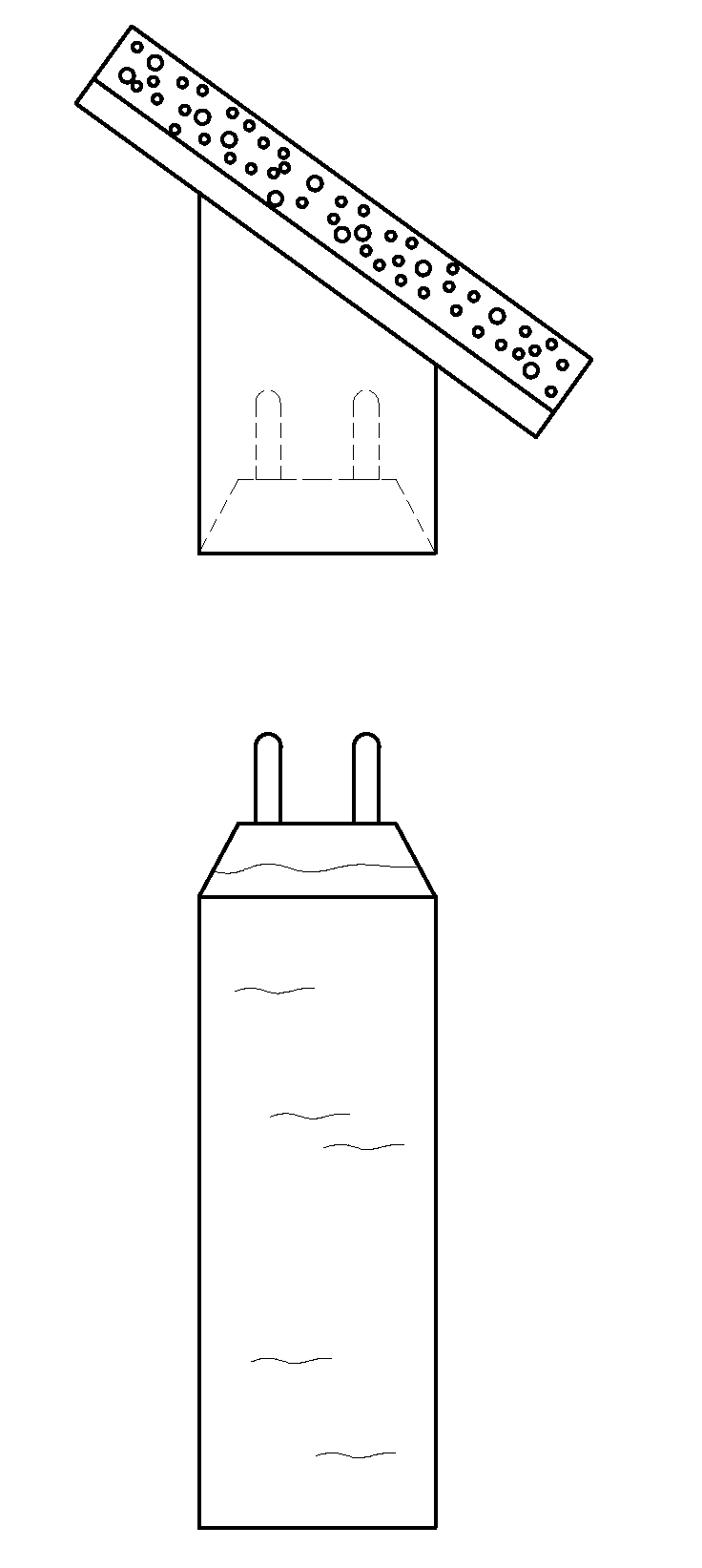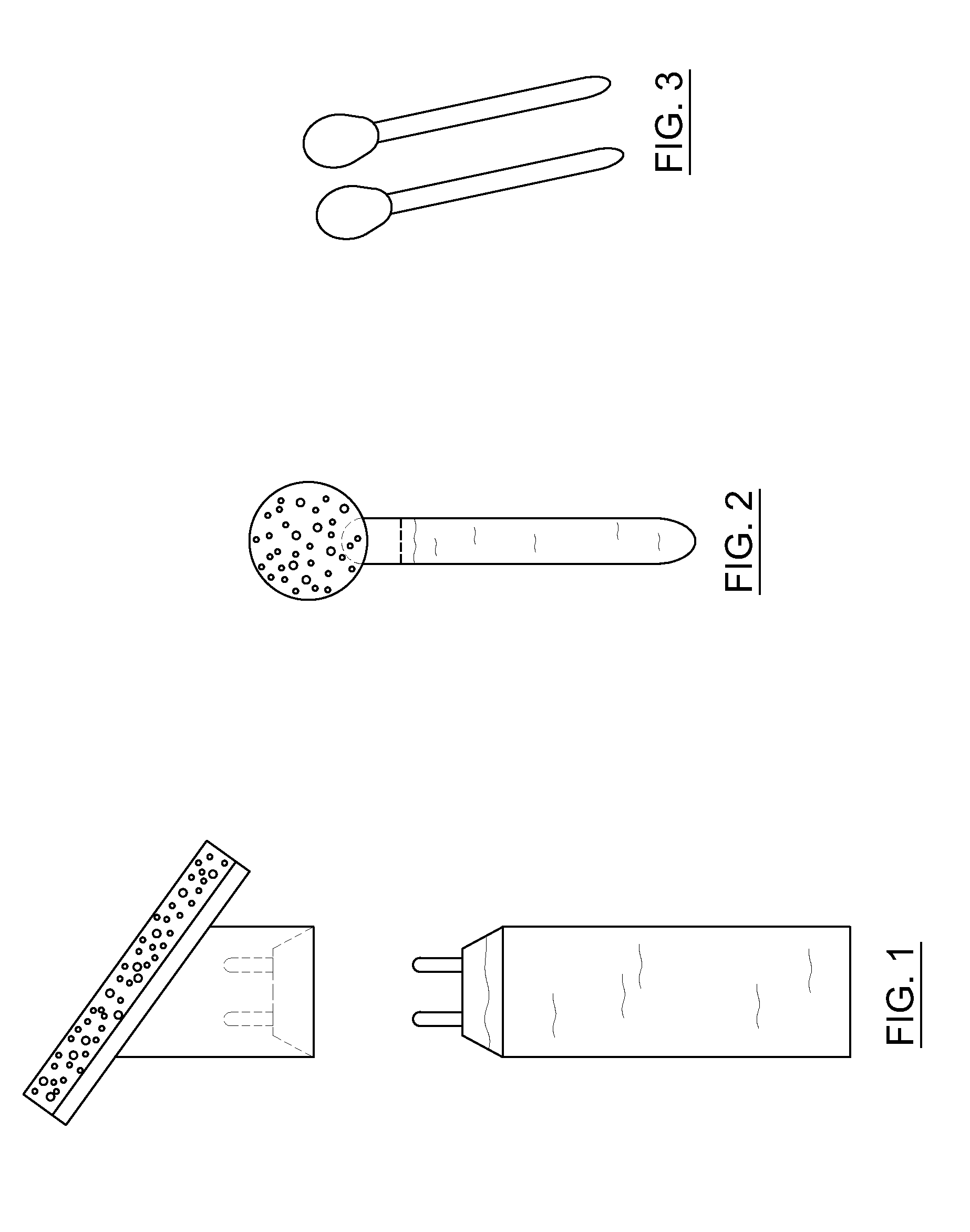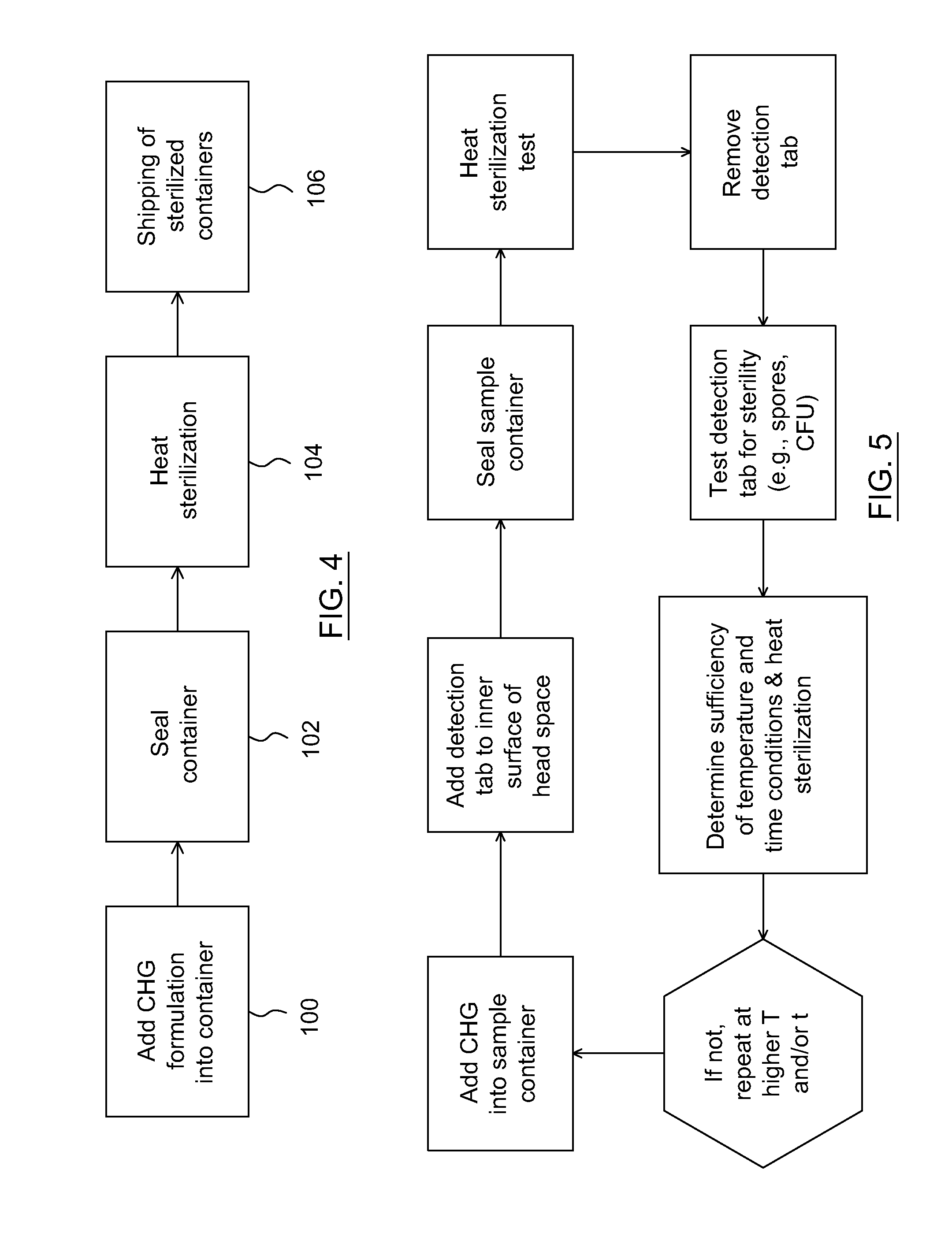Heat sterilization techniques for chlorhexidine based antiseptic formulations
a chlorhexidine and antiseptic technology, applied in the field of heat sterilization techniques for chlorhexidine based antiseptic formulations, can solve the problems of various drawbacks and challenges of each of these general methods
- Summary
- Abstract
- Description
- Claims
- Application Information
AI Technical Summary
Benefits of technology
Problems solved by technology
Method used
Image
Examples
examples
[0043]Experiments were conducted to determine whether heat treatment was able to sterilize containers containing a chlorhexidine based antiseptic formulation.
[0044]A formulation was prepared containing CHG, isopropyl alcohol and purified water. The formulation was put into a hermetically sealed container. Exposure to a temperature between 62° C. and 67° C., and the heating time of at least 12 hours, resulted in sterilization of the interior of the container, including surfaces not in direct contact with the formulation.
PUM
| Property | Measurement | Unit |
|---|---|---|
| temperature | aaaaa | aaaaa |
| temperature | aaaaa | aaaaa |
| temperature | aaaaa | aaaaa |
Abstract
Description
Claims
Application Information
 Login to View More
Login to View More - R&D
- Intellectual Property
- Life Sciences
- Materials
- Tech Scout
- Unparalleled Data Quality
- Higher Quality Content
- 60% Fewer Hallucinations
Browse by: Latest US Patents, China's latest patents, Technical Efficacy Thesaurus, Application Domain, Technology Topic, Popular Technical Reports.
© 2025 PatSnap. All rights reserved.Legal|Privacy policy|Modern Slavery Act Transparency Statement|Sitemap|About US| Contact US: help@patsnap.com



